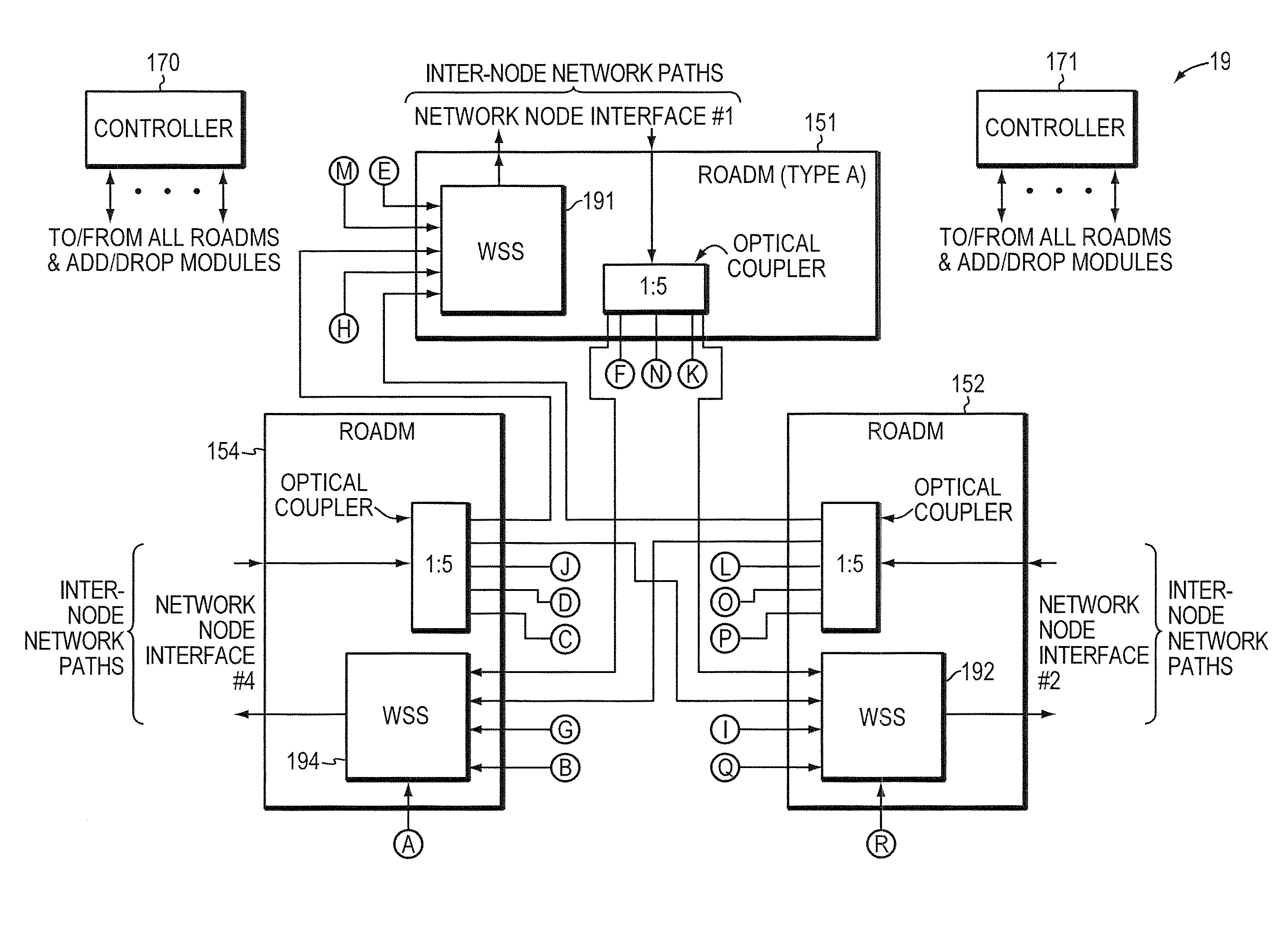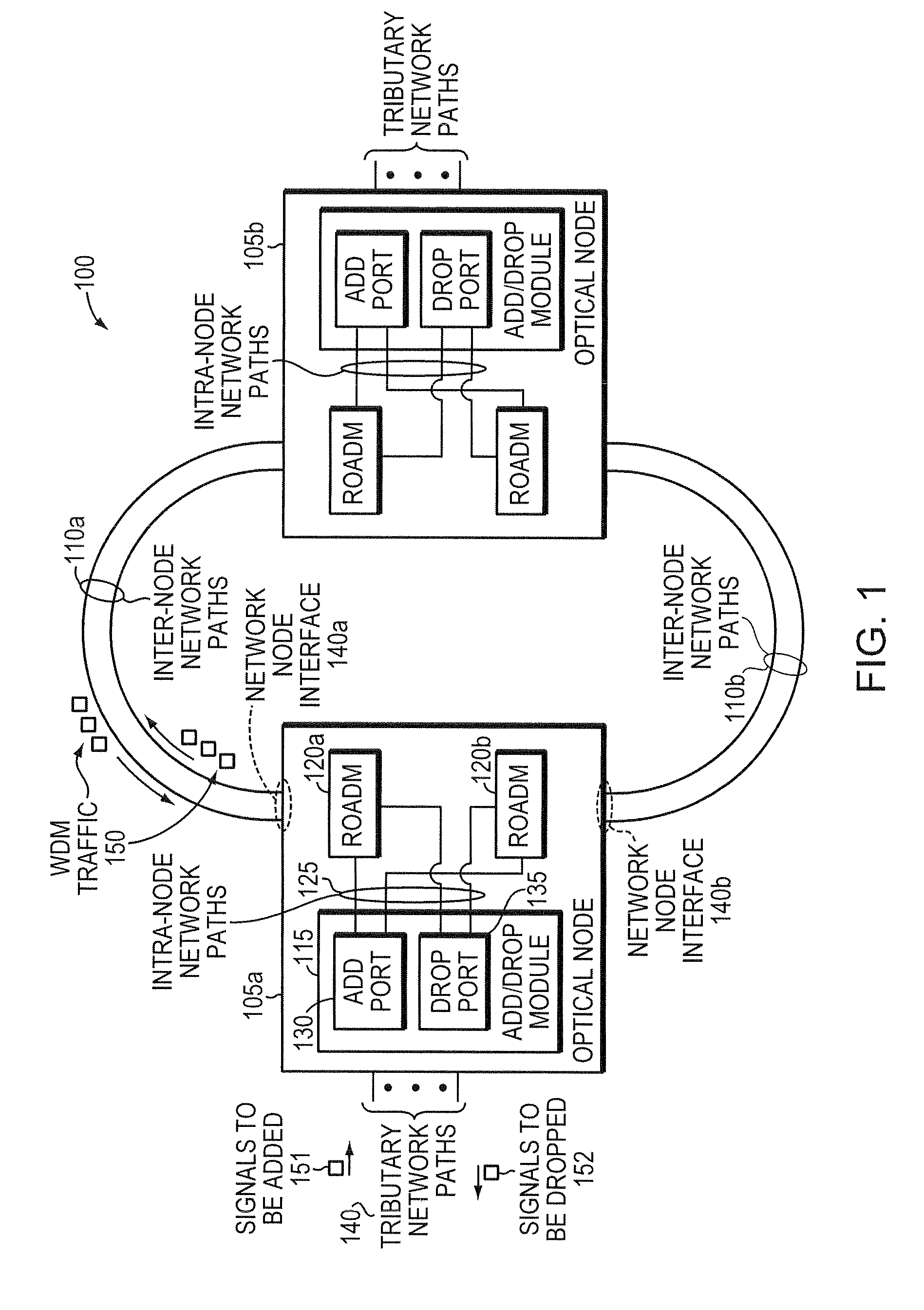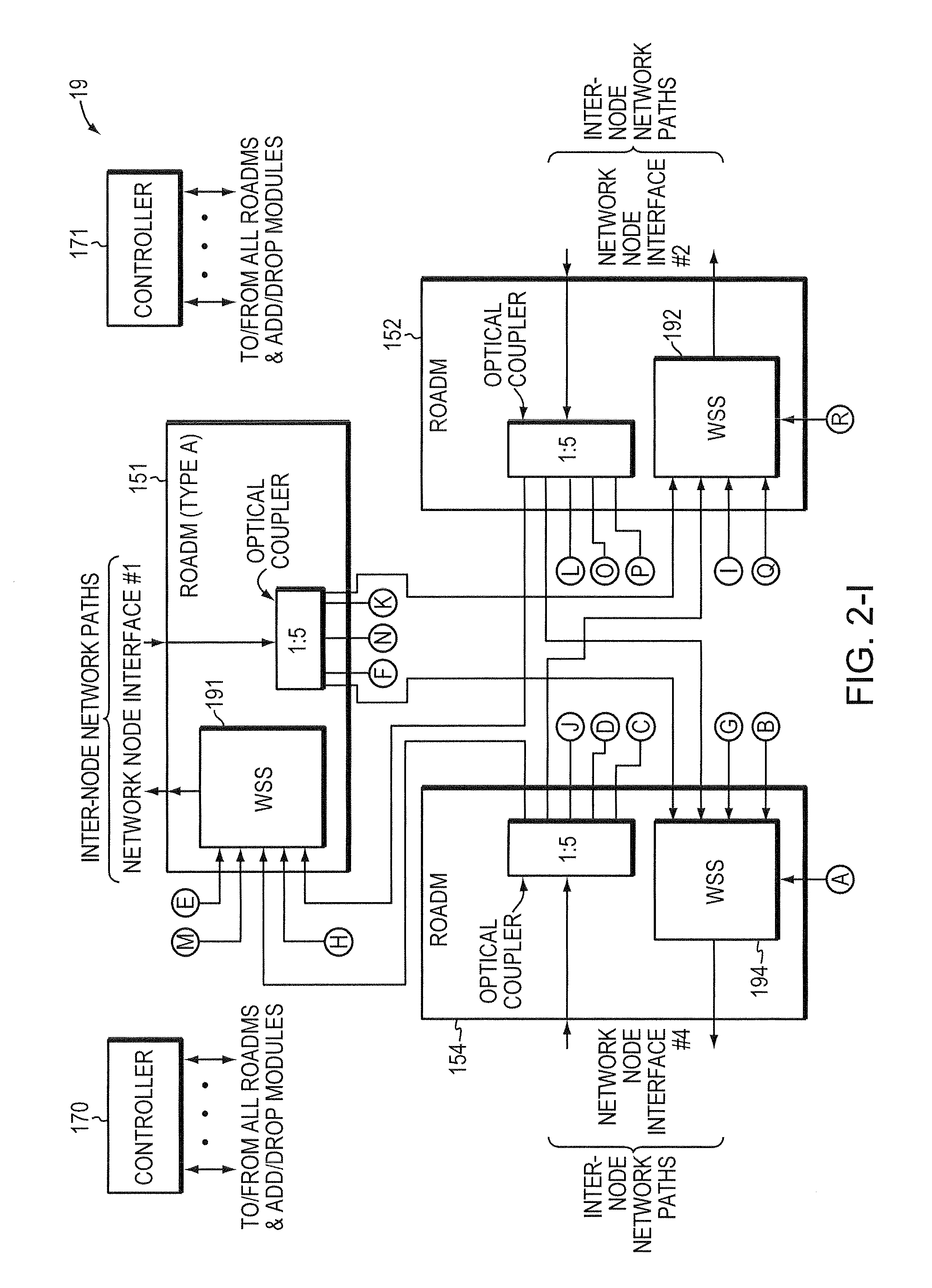Methods and apparatus for performing directionless and contentionless wavelength addition and subtraction
a wavelength addition and subtraction and contentionless technology, applied in the field of methods and, can solve problems such as inflexibility at the network level
- Summary
- Abstract
- Description
- Claims
- Application Information
AI Technical Summary
Benefits of technology
Problems solved by technology
Method used
Image
Examples
Embodiment Construction
[0023]A description of example embodiments of the invention follows.
[0024]The present application incorporates by reference the contents of U.S. patent application Ser. No. 11 / 697,527, entitled “MULTIFUNCTIONAL AND RECONFIGURABLE OPTICAL NODE AND OPTICAL NETWORK,” published Jan. 17, 2008, as U.S. Patent Application Publication No. 2008 / 0013954, in its entirety as if fully set forth herein. The teachings of all patents, published applications, and references cited herein are incorporated by reference in their entireties.
[0025]In an optical mesh network, it is possible to route optical signals at different wavelengths around network failures using the reconfigurable capability of reconfigurable optical add / drop multiplexers (ROADMs) used within these networks. (The terms, “ROADM,”“ROADM module,”“ROADM core,” and “ROADM core device,” are used interchangeably herein.) In an event of a network failure and wavelength re-routing, a wavelength may be redirected from a first network node int...
PUM
 Login to View More
Login to View More Abstract
Description
Claims
Application Information
 Login to View More
Login to View More - R&D
- Intellectual Property
- Life Sciences
- Materials
- Tech Scout
- Unparalleled Data Quality
- Higher Quality Content
- 60% Fewer Hallucinations
Browse by: Latest US Patents, China's latest patents, Technical Efficacy Thesaurus, Application Domain, Technology Topic, Popular Technical Reports.
© 2025 PatSnap. All rights reserved.Legal|Privacy policy|Modern Slavery Act Transparency Statement|Sitemap|About US| Contact US: help@patsnap.com



